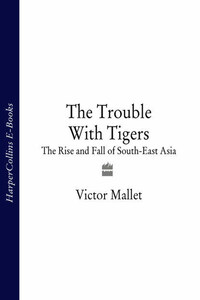Asia can be disconcertingly modern for a westerner. One day a couple of years ago I was reverently approaching the centre of the ancient temple of Angkor Wat in Cambodia – apparently alone as I admired this 900-year-old work of art – when I heard a strange, high-pitched burbling noise. I soon found the cause. A Cambodian woman was sitting in the centre of the temple playing furiously with her hand-held electronic Game Boy. Perhaps I should not have been surprised. Europeans and Americans, not to mention Asian tourist boards, are still guilty of ‘Orientalism’, the practice of portraying eastern lands as exotic, sensual and mystical, rather than as part of the modern world. Asians themselves, meanwhile, have been taking part in the fastest industrial revolution in history, completing in a few decades a modernization that took 150 years or more for the first such revolution in England in the eighteenth and nineteenth centuries. And they have been doing so at a time when technology has advanced far beyond steam engines to computers and electronics, allowing them to leapfrog whole stages of the industrial revolutions experienced by others. It is not uncommon for Asian men and women to move straight from working in the family’s paddy fields to a factory producing microchips.
The world was rightly fascinated by this post-war transformation of agrarian Asian societies into fast-growing, industrial exporters, a process which came to be called the ‘Asian miracle’. Much has been written about the economics behind Asia’s success in the last four decades. But there is less literature on the risks presented by the extraordinary social and political upheavals accompanying this ‘miracle’ – risks that were vividly illustrated by the financial crash of the late 1990s. That is a gap I hope to fill. Likewise, there have been many books of general interest published about Japan and China, but not enough about the countries of south-east Asia. Indonesia – the fourth most populous nation and the largest Moslem one – has been correctly described as the most under-reported country on the globe.
I hope this book, by addressing these issues, will help to explain the financial crisis which erupted in Thailand in mid-1997, spread to the rest of Asia and eventually disrupted economies as far away as South Africa and Latin America. I trust it also shows that the continuing confrontation between the Malaysian government and its opponents and the Indonesian popular uprising in 1998 were not isolated events triggered solely by the crash of Asian markets, but part of a pattern of political reform throughout the region.
There has been no slackening in the pace of Asia’s industrial revolution in recent months. South-east Asian economies began to recover in 1999, although (as discussed in the final chapter) there are doubts about whether they will return to the high growth rates of the past. Over-reaction has been a consistent theme of short-term foreign investment in Asia, to the detriment of the investors as well as the recipients of the money. In the 1980s and early 1990s, over-optimistic investors thought south-east Asian economies could do no wrong. In 1997 and 1998, they withdrew their money in a pessimistic panic, consigning hundreds of companies to bankruptcy and millions of diligent workers to unemployment. Then they regained their confidence in the first half of 1999, pumping money back into the region in spite of warnings that governments had failed to tackle the ‘crony capitalism’, corruption and poor banking practices that had precipitated the crisis in the first place.
Politicians have been busy, too. In Indonesia, President B.J. Habibie, the interim leader who succeeded the deposed Suharto, allowed the country to hold its first democratic election in nearly half a century in June 1999. The party of Megawati Sukarnoputri, a former opposition leader, won the most votes, but it was Abdurrahman Wahid, the ailing Moslem leader, who was later elected president. Still more remarkable was the Habibie government’s decision to grant the people of East Timor – brutally invaded by Indonesia in 1975 – the chance to secede. A referendum on independence was held under UN auspices in August 1999, amid frequent outbreaks of violence in East Timor itself and other far-flung parts of the Indonesian archipelago. The East Timorese voted overwhelmingly for independence, but pro-Indonesian militiamen backed by the security forces immediately unleashed a campaign of terror on the largely defenceless population.








